Now on view at the Columbus Museum of Art (CMA) in Ohio is the largest presentation of the Pizzuti family collection—from Ron and Ann Pizzuti—to date. Featuring around 125 works, “Driving Forces: Contemporary Art from the Collection of Ann and Ron Pizzuti,” is the first comprehensive show to fill both the Pizzuti Collection of the Columbus Museum of Art (Pizzuti Collection of CMA) and the CMA’s main campus.
Curated by Tyler Cann, Pizzuti Family Curator of Contemporary Art, and guest curator Rebecca Ibel, the exhibition showcases works from the Pizzuti’s artist-focused collection, which explores the way creatives respond to the surrounding world. Featuring works by 75 international, intergenerational artists including Zanele Muholi, Frank Stella, Deana Lawson, Nick Cave, and Susan Rothenberg, “Driving Forces” offers a dialogue on the role of the artist in society, looking at works that have helped define what art means in the 21st century.
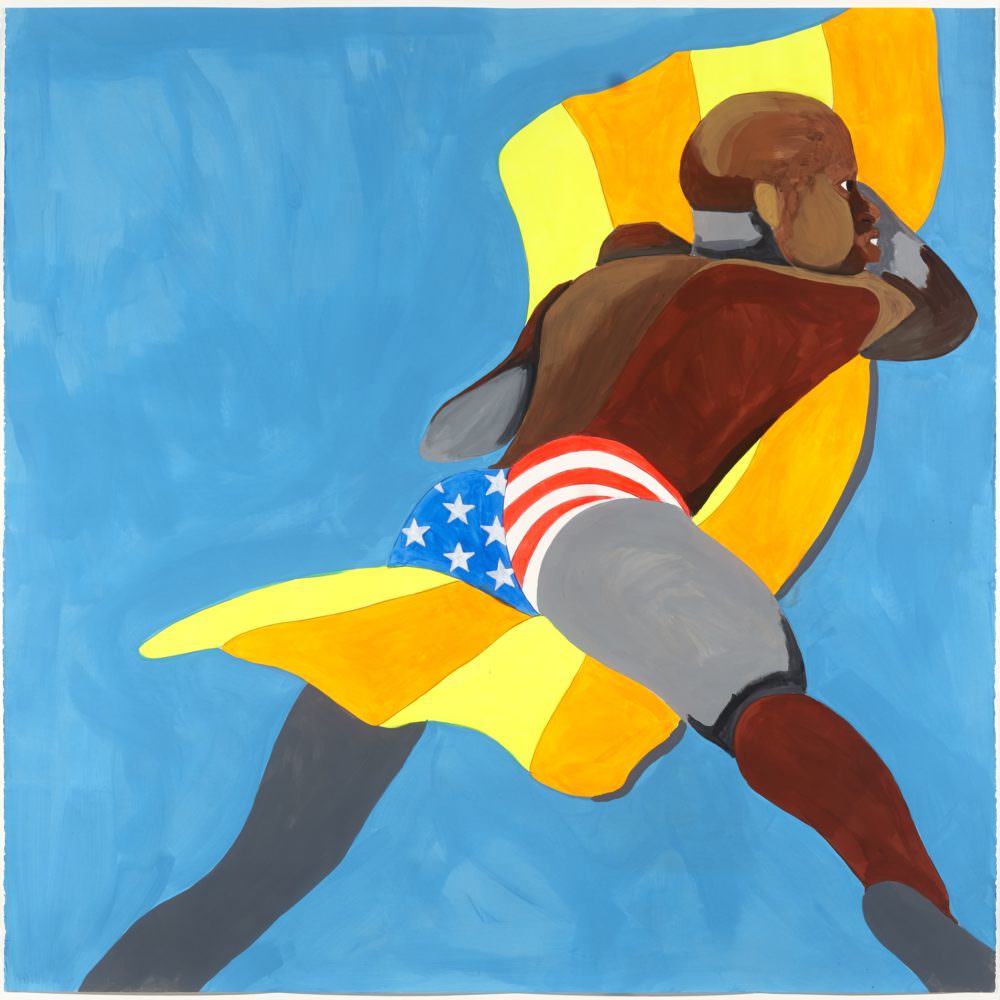
Derrick Adams
Floater 19
2016
Acrylic paint and graphite pencil on paper
50 x 50 inches
Pizzuti Collection
© Derrick Adams
Photo by Alan Geho
Courtesy of the artist.
The Pizzuti family donated their five-year-old space to the CMA in 2018 in order to serve the greater public of Columbus. “Driving Forces” will remain open through March 8, 2020 at the Pizzuti Collection of CMA, while the works in the CMA will be on view until February 2, 2020.
To learn more about the exhibition and the family’s collection, Whitewall spoke with Ron Pizzuti last month in New York.
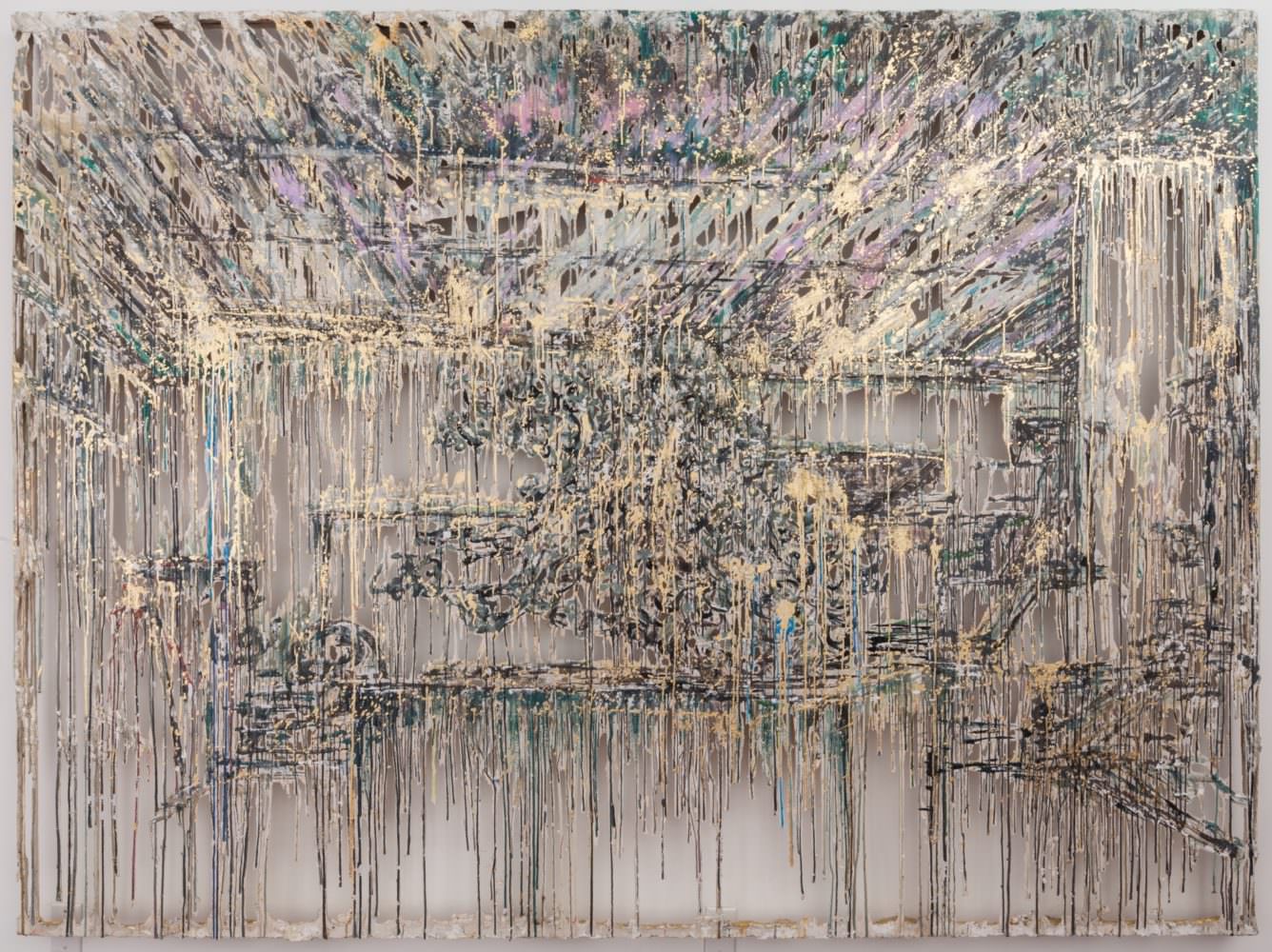
Diana Al-Hadid
Dust Unsettled
2014
Polymer gypsum, fiberglass, steel, plaster, gold leaf, pigment
80 ¼ x 108 x 3 ½ inches
Pizzuti Collection
© Diana Al-Hadid
Photo by Jason Mandella
Courtesy of the artist and Marianne Boesky Gallery, New York and Aspen.
WHITEWALL: Can you tell us about your relationship with the CMA and how you came to the decision to donate your building?
RON PIZZUTI: I’ve had a relationship with the museum for probably close to 40 years. I’m a lifetime member of the board of trustees, I served as a chairman of the board for several years, and we’ve taken our children there since they were old enough to walk and see art.
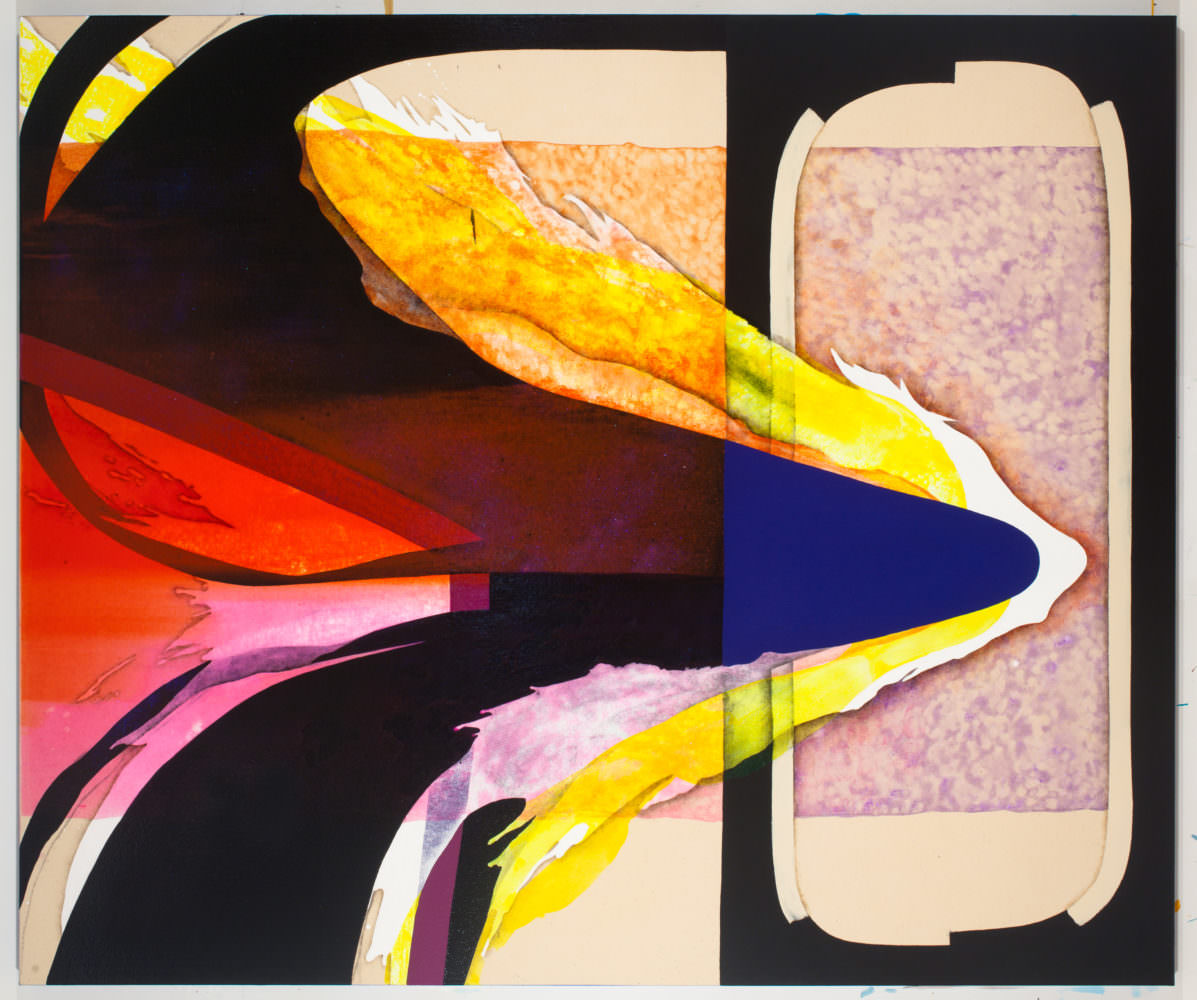
Carrie Moyer
1960
Stroboscopic Painting #1
2011
Acrylic, glitter on canvas
60 x 72 inches
Pizzuti Collection
© Carrie Moyer
Courtesy of the artist and DC Moore Gallery, New York.
We decided it was time to share more of what we’ve collected over the years. So, we donated our building on our fifth anniversary and about 50-some odd pieces of art, most of which are museum quality works. Many of them are too large to be housed in a residence— artists like Dubuffet and Antony Gormley are two classic examples.
WW: What can you tell us about the exhibition “Driving Forces”?
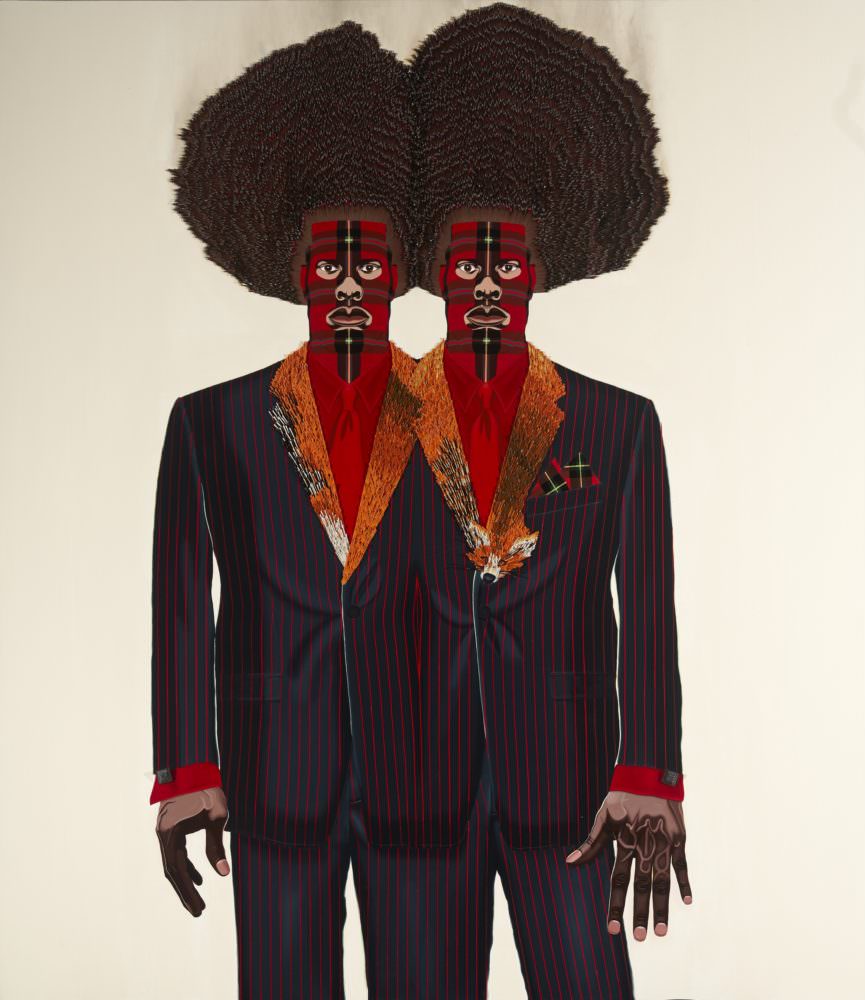
Jeff Sonhouse
Meeting at the Crossroads
2003
Oil and mixed media on can
vas
75 x 65 x 3 ¼ inches
Pizzuti Collection
© Jeff Sonhouse
Photo by Alan Geho
Courtesy of the artist and Tilton Gallery, New York.
RP: The show is [around]125 works and it’s a cross section that chronicles the history of our collecting activities, starting with the first print we bought in 1972.
WW: You and your wife Ann acquired your first work, Circus People by Karel Appel, in 1972. Can you tell us the story behind that work and the start of your collection?
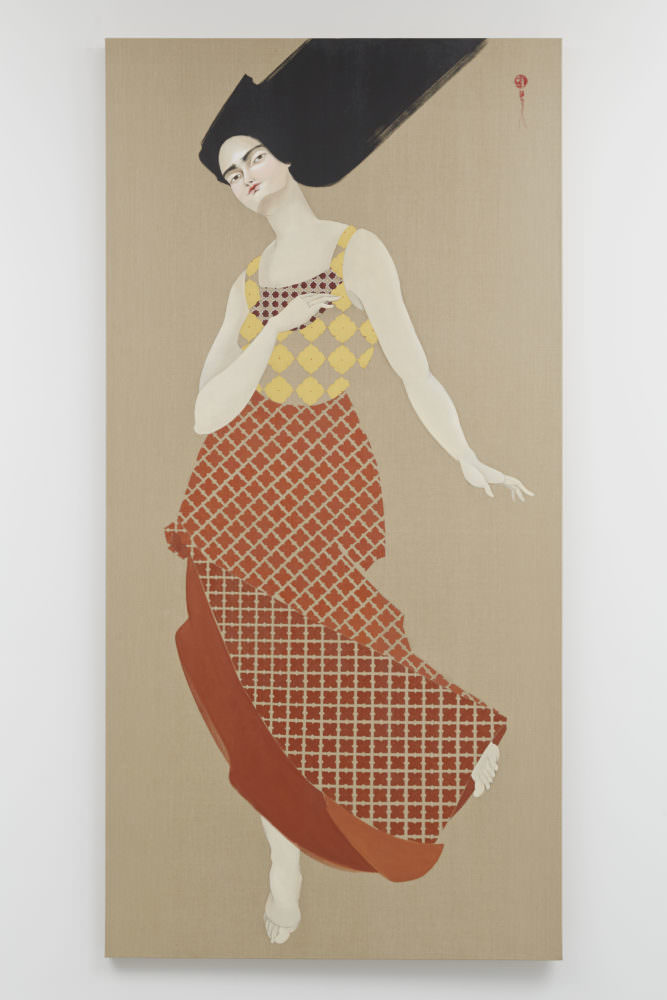
Hayv Kahraman
Kawilya.2.
2014
Oil on linen
96 x 48 x 2 inches
Pizzuti Collection
© Hayv Kahraman
Courtesy of the artist, Jack Shainman Gallery, New York, Susanne
Vielmetter, and
The Third Line Gallery.
RP: It started in Paris. I spent a great deal of time in Europe when I was in the retail business and spent time in London, Paris, Florence, and other capitals.
One night, I just wandered into a small gallery in Montmartre and came upon this Frank Stella painting. I had no idea who he was, but I loved it. It was part of his Protractor series and it was $10,000. At the time, I wasn’t even netting $10,000 a year, so the thought of spending a year’s salary on a painting (and I didn’t own any art at the time) was ludicrous. I couldn’t imagine doing it. But I was so intrigued with the painting that I came back to New York, went to the New York Public Library, looked up Mr. Stella, and since have gotten to know him well. And I became, in a sense, a student of his.
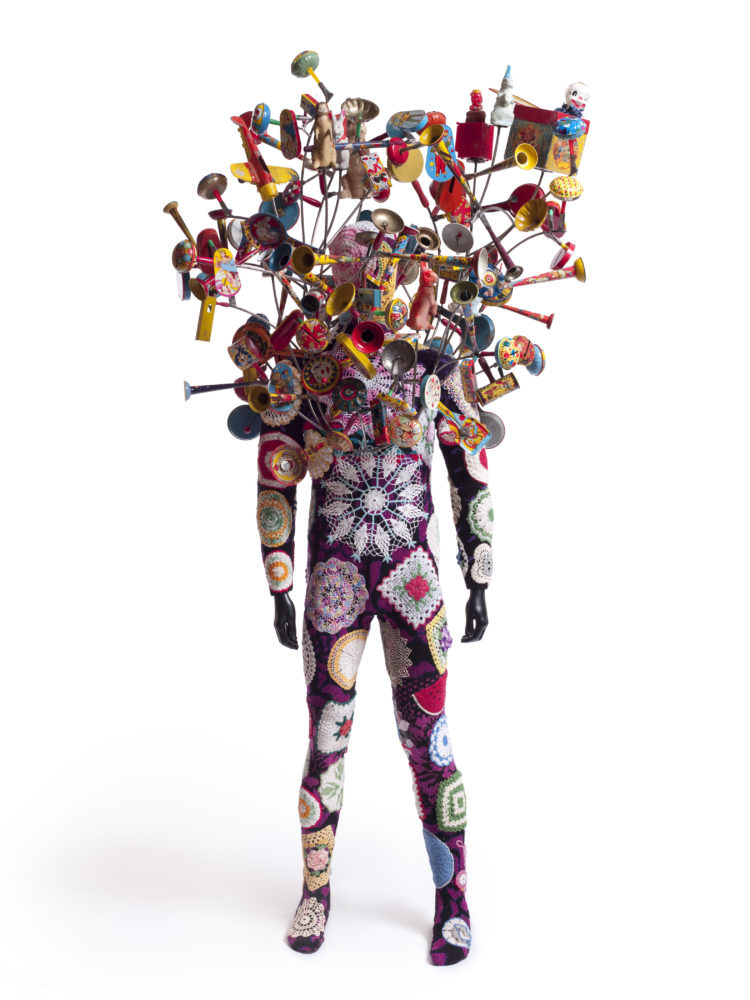
Nick Cave
Soundsuit
2010
Mixed media
92 x 43 x 48 inches
Pizzuti Collection
© Nick Cave
Photo by James Prinz
Courtesy of the artist and Jack Shainman Gallery, New York.
Karel Appel came along as a result of my visiting a branch of Pace Gallery that was located in Columbus, Ohio. Arne Glimcher’s mother Eva Glimcher owned the gallery.
Being so enthralled with Stella and this colorful work, I was attracted to a print, which was all we could afford at the time.
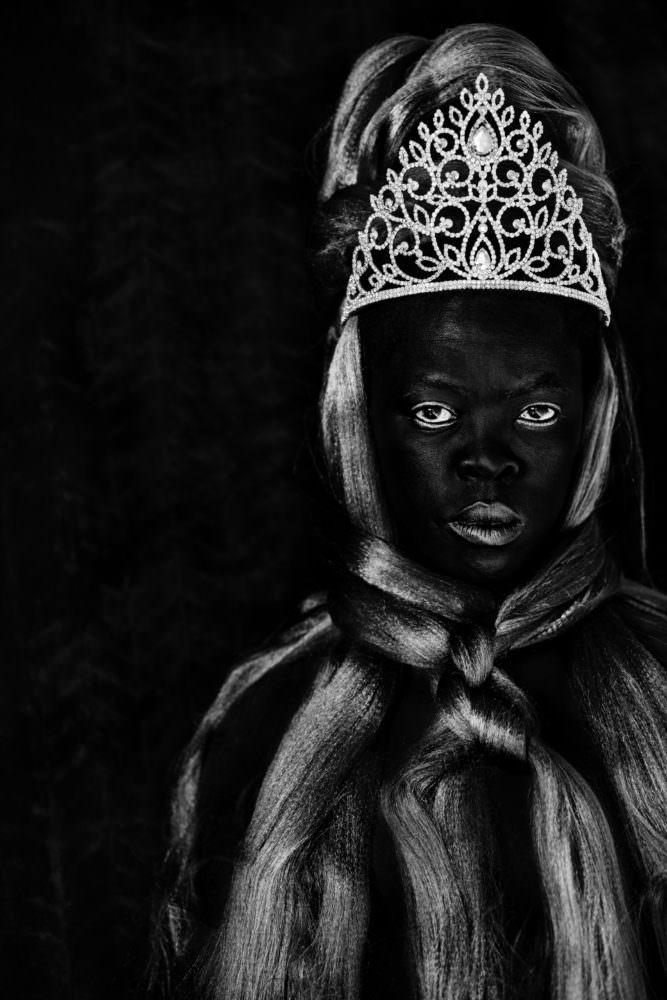
Zanele Muholi
Ntozabantu II, Parktown
2016
Gelatin silver print
31 ½ x 20 7/8 inches
Pizzuti Collection
© Zanele Muholi
Courtesy of the artist, Yancey Richardson, New York, and Stevenson Cape Town /
Johannesburg.
I never talk about what we pay for things, but we paid $900 for this print. We paid $100 a month and when we were able to pay it down 50 percent, we were permitted by Mrs. Glimcher to buy something else. And that was the beginning.
I learned later, by the way, that the painting I saw in Paris was a maquette. It was actually a painting, but the original was owned by Bill Rubin, who was curator of painting and sculptures at MoMA. We ended up buying that painting maybe 10 years later and it’s still hanging in our home.
WW: When putting together the show, were there any works you were excited to revisit?
RP: Oh, all of them. I enjoy revisiting everything that’s in this series of exhibitions. The museum retained our original curator and director of the Pizzuti collection, who knows the collection well. She did an excellent job of selecting the works and showcasing them in two venues.
WW: What do you want viewers to walk away with?
RP: I want them to be stimulated enough to want to collect themselves and to get to expose themselves to the type of works we’ve collected over the years.
Museums and even many galleries can be intimidating and we’ve tried hard to create an environment that is inviting. I think we’ve been pretty successful with it.
WW: Would you say you’re drawn to a particular theme or medium?
RP: Originally, we collected only prints because that was all we could afford. I was attracted to prints out of necessity, then graduated to paintings, and now we have a multimedia collection that includes video, photography, and drawings.
My first painting was actually from Frank Stella. It was a mixed media painting that’s still in our collection. I also love collecting in depth. We concentrated on Dubuffet for a couple of years and, of course, we’re still collecting Frank Stella.
If I started over, I would probably concentrate on drawings. I can’t draw and I put a lot of value on artists who can, and whose work—whether it be a painting or sculpture—comes out of their ability to draw.
WW: Recently you said that you’re now focusing on the work of Cuban artists. Can you tell us about that?
RP: It started by accident. I took my first trip to Cuba about eight years ago. I didn’t go there specifically to buy art, but I obviously knew I was going to spend some time focusing on the art that was made on the island. I ended up buying our first piece of Cuban art during that first trip and I’ve gone back almost every year since.
WW: How do you and Ann collect together?
RP: Ann has veto power. If she doesn’t like something I bring home, it doesn’t get hung in our home.
When we opened the Pizzuti collection, she became very, very involved on the administrative side. She’s bought a couple pieces over the years and they ended up among my favorites, but the collecting activity is pretty much confined to me.
WW: What kind of works do you have across your homes? Do you rotate them often?
RP: Design, we’ve got a Marcel Wanders chair, Joris Laarman chairs made with a 3D printer, Maarten Baas dining table, Georg Jensen late 18th century cabinet that was made for him, and a fair amount of Jensen silver, Ettore Sottsass, and we’re sitting in front of an Ali Banisadr painting, Tomory Dodge, Anselm Reyle. Thomas Leduc; Jim Hodges. We rotate, but not any set schedule.
We’re going on 20 years in our home in Columbus and we have a Schnabel plate painting, a Baselitz painting, a Dubuffet, and a Jim Hodges mirror that has never moved from the original location, unless it was loaned to a museum.
WW: Your collection is described as artist driven. What does that mean to you and Ann?
RP: It’s artist driven because we make a big effort to meet the artists. Over the years we’ve tried to meet virtually every artist that’s in our collection and have had the good fortune to meet many who are no longer on this earth. It became a real passion of mine to visit studios and I now have many artists out there who I consider friends.







